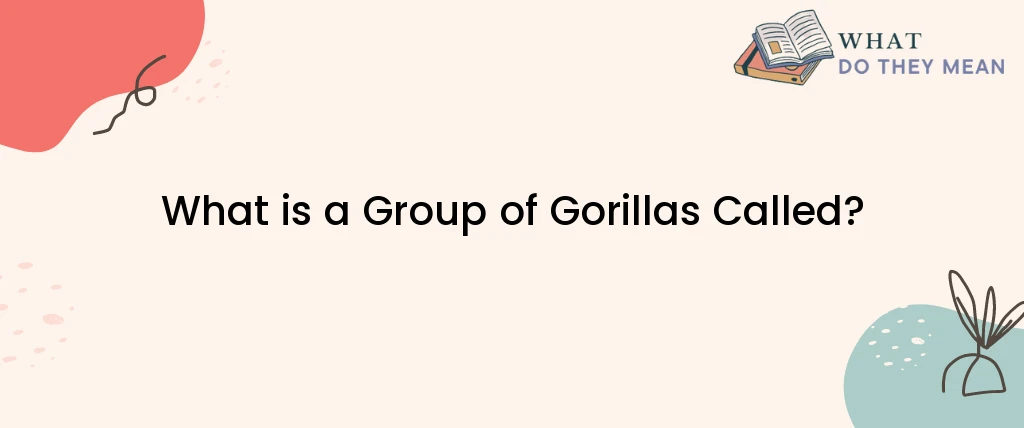Gorillas, the largest primates on Earth, are known for their immense strength, intelligence, and complex social behavior. These majestic creatures form tight-knit communities called gorilla groups. In this article, we will explore the fascinating world of gorilla groups, delving into their dynamics, behavior, and conservation efforts. Join us as we unravel the mysteries behind what makes a group of gorillas truly remarkable.
The Social Gorillas
Gorillas are highly social animals, and their social structure is based on the formation of cohesive groups. These groups consist of individuals who share a common genetic heritage and are led by a dominant silverback male. The silverback serves as the leader and protector of the group, ensuring its well-being and guiding its actions.
Gorilla Group Dynamics
Within gorilla groups, a complex set of relationships and hierarchies exist. The silverback holds the highest position, with subordinate males, adult females, and their offspring forming the rest of the group. Each member has a specific role and interacts with others through intricate social behaviors, such as grooming, playing, and communication.
Types of Gorilla Groups
There are two main types of gorilla groups: the one-male groups and the multi-male groups. One-male groups consist of a dominant silverback, a few adult females, and their offspring. In contrast, multi-male groups consist of multiple silverbacks, along with several adult females and their young.
Leadership within Gorilla Groups
The silverback male plays a crucial role in maintaining order and ensuring the group’s survival. His responsibilities include protecting the group from threats, resolving conflicts, and making important decisions regarding feeding locations and group movements. The silverback’s leadership is earned through displays of strength, intelligence, and successful defense of the group.
Communication Among Gorillas
Communication is vital within gorilla groups, and these intelligent creatures employ a wide range of vocalizations, body postures, and facial expressions to convey their intentions and emotions. Grunts, roars, chest-beating, and other vocalizations help gorillas communicate over long distances, while gentle touches, hugs, and grooming reinforce social bonds within the group.
You may also like: What is a Group of Squirrels Called?
Gorilla Group Size
Gorilla groups vary in size, depending on the type of group and available resources in their habitat. One-male groups typically consist of around 5 to 30 members, while multi-male groups can have 10 to 40 or more individuals. The size of the group directly influences its social dynamics, feeding patterns, and territorial behavior.
Gorilla Group Behavior
Gorilla groups exhibit a variety of behaviors that are crucial for their survival and well-being. They engage in social grooming, which not only maintains hygiene but also strengthens social bonds. Gorillas are herbivores, and their feeding habits are characterized by consuming large amounts of vegetation, such as leaves, stems, fruits, and bamboo shoots.
Gorilla Group Migration
Gorilla groups are not sedentary and may engage in seasonal migrations within their habitat. These migrations are influenced by the availability of food, water sources, and environmental conditions. The ability to adapt and move to different areas allows gorilla groups to sustain themselves and thrive in their ever-changing surroundings.
Gorilla Group Conservation
Conservation efforts play a vital role in protecting gorilla groups from various threats they face. Loss of habitat due to deforestation, poaching, and disease outbreaks pose significant challenges to gorilla populations. Conservation organizations work tirelessly to establish protected areas, promote sustainable practices, and raise awareness about the importance of preserving gorilla habitats.
Threats to Gorilla Groups
Gorilla groups face several threats that endanger their existence. Illegal hunting for bushmeat and trophy hunting remains a pressing issue, resulting in the loss of valuable individuals within the groups. Additionally, habitat destruction due to human activities, such as logging and agriculture expansion, further disrupts gorilla populations and their ability to thrive.
Studying Gorilla Groups
Researchers and conservationists employ various techniques to study gorilla groups and gather valuable data. Field observations, camera trapping, genetic analysis, and non-invasive methods like collecting fecal samples help in understanding their behavior, genetics, and health. These studies aid in formulating effective conservation strategies and ensuring the long-term survival of gorilla groups.
FAQs
Gorilla groups can vary in size, but typically range from 5 to 40 individuals, depending on the type of group and available resources.
Yes, gorilla groups are led by a dominant silverback male who serves as the leader and protector of the group.
Yes, gorilla groups may engage in seasonal migrations based on the availability of food, water sources, and other environmental factors.
Conclusion
In conclusion, a group of gorillas is called a gorilla group. These social animals exhibit remarkable behaviors, communication, and leadership within their groups. The conservation of gorilla groups is crucial for preserving these majestic creatures and the delicate ecosystems they inhabit. By understanding the intricacies of gorilla groups, we can work towards protecting their future and appreciating the extraordinary nature of these magnificent animals.

As a researcher, I am curious and driven by the pursuit of knowledge. I approach my work with a critical eye, carefully evaluating sources and methods to ensure that my findings are accurate and reliable. Whether delving into scientific studies, historical records, or cutting-edge technologies, I am always seeking to expand my understanding and make new discoveries. I am dedicated to uncovering new insights and finding solutions to complex problems, and am driven by a passion for uncovering the truth.



